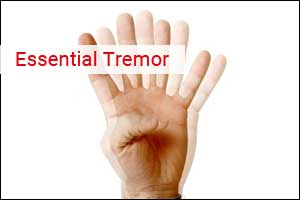- Home
- Editorial
- News
- Practice Guidelines
- Anesthesiology Guidelines
- Cancer Guidelines
- Cardiac Sciences Guidelines
- Critical Care Guidelines
- Dentistry Guidelines
- Dermatology Guidelines
- Diabetes and Endo Guidelines
- Diagnostics Guidelines
- ENT Guidelines
- Featured Practice Guidelines
- Gastroenterology Guidelines
- Geriatrics Guidelines
- Medicine Guidelines
- Nephrology Guidelines
- Neurosciences Guidelines
- Obs and Gynae Guidelines
- Ophthalmology Guidelines
- Orthopaedics Guidelines
- Paediatrics Guidelines
- Psychiatry Guidelines
- Pulmonology Guidelines
- Radiology Guidelines
- Surgery Guidelines
- Urology Guidelines
Wrist band to improve symptoms of Essential Tremor

Essential tremor is a nervous system (neurological) disorder that causes involuntary and rhythmic shaking. It can affect almost any part of your body, but the trembling occurs most often in your hands — especially when you do simple tasks, such as drinking from a glass or tying shoelaces. It is more common in people age 40 and older.
Opinion leaders believe that there's a need for an alternative for ET. The main drug choices — the β-blocker propranolol and the anticonvulsant primidone — are not benefiting all patients and most of them can't tolerate them.
Researchers have come up with a unique Wrist band which will improve some activities of daily living.
Dr Rajesh Pahwa and his associates have mentioned in their study regarding noninvasive peripheral nerve stimulation device that will relieve symptoms in patients with essential tremor.The device is in the form of a wrist band.
The inner surface of the wrist band contains electrodes that stimulate the median and radial nerves.The front of the band has an "on" and "off" switch
It's an early study and the still-investigational device is not yet "ready for prime time." says Pahwa.
The thought is that stimulation with this new device sends signals along the sensory nerves to the central nervous system, which affects the circuitry in the brain and improves tremors, said Pahwa.
One of the aims of this study was to determine whether the device is useful and safe in the home environment over a period of time, said Pahwa. "We wanted to know if patients would use it at home. Is it something they could use if they were, say, eating or using a computer?"
The researchers carried out two different studies of the device, an acute study and an at-home chronic study.
In the acute study, researchers randomly assigned 77 patients to receive peripheral nerve treatment or sham stimulation of the tremor dominant hand. The sham stimulation was very mild and was named "substimulation." By Pahwa.
Investigators evaluated tremor before and after a single stimulation session. They used the patient-rated Bain & Findley activities of daily living scale and the physician-rated Tremor Research Group Essential Tremor Rating Assessment Scale (TETRAS) dominant upper limb scale.
The Bain & Findley scores significantly improved with the treatment compared with the sham (P = .001).
"If you look overall, there was about a 20% difference compared with sham," said Pahwa.
"If you go to specific tasks, unlocking a door with a key, picking up change, holding a cup, and dialing a phone were all significantly improved," while other tasks improved but not significantly.
As for TETRAS, which assessed tasks such as holding the arm straight out in front of the body, the study showed the therapy produced significant improvements compared with sham (P = .017).
The improvement noticed in scores for the active stimulation compared with sham was about 20
"There was definitely a group of patients who had dramatic improvements," commented Pahwa.
He said that this device is helpful for such patients for whom medicines are not providing adequate control but whose tremors are not severe enough to be considered for invasive surgery.
The researcher stated that more research is to be done in this arena
The study also found that the therapy was safe. Patients did not report any significant adverse events. About 3% of patients experienced mild effects, such as skin redness and irritation, but these spontaneously resolved without intervention.
For the chronic study, researchers randomly assigned 61 patients to treatment, sham, or standard of care.
The at-home sham group did not receive stimulation but only wore the device. Standard of care was whatever therapy patients were already receiving, whether medications for tremor or nothing at all. These patients didn't wear the device so no recordings were available.
Patients in the treatment group were asked to turn on the device while performing certain tasks a minimum of two sessions each day for 4 weeks.
In this study, researchers collected baseline tremor characteristics, including tremor frequency, as well as tremor characteristics and response over the course of the study.
The study was supported by Cala Health Inc.
The research will be presented on April 25 at the upcoming American Academy of Neurology (AAN) 2018 Annual Meeting in Los Angeles, California

Disclaimer: This site is primarily intended for healthcare professionals. Any content/information on this website does not replace the advice of medical and/or health professionals and should not be construed as medical/diagnostic advice/endorsement or prescription. Use of this site is subject to our terms of use, privacy policy, advertisement policy. © 2020 Minerva Medical Treatment Pvt Ltd